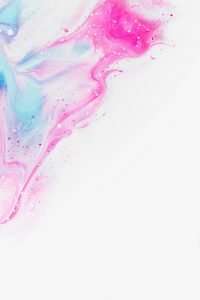Art is not just a luxury or an aesthetic choice. It is an essential component of being healthy and finding your passion. Life is hard and can be emotionally draining, and art can provide you with a soothing escape or help you to cope with the reminders of trauma that can pop up unexpectedly in the present.
Art has been proven to be a helpful therapeutic tool in numerous studies and by the experiences of many people. By channeling your feelings into art, you are better equipped to handle them in a more positive way.
Art therapy is defined as “a form of psychotherapy that uses the creative process of art making to improve self-awareness, explore feelings and increase communication skills.” Art therapy may consist of drawing, painting, sculpting, collage making, and/or writing.
Art has been proven to reduce stress and anxiety, boost self-esteem and confidence, improve sleep quality and promote relaxation.* It is also used to help people cope with traumatic events such as abuse or illness by helping them get their thoughts out onto paper (or computer screen).
The connection between art therapy and physical health is one that I have seen over time in my own life. If I keep physically active even when I’m stressed out my mood improves considerably.* However, this was not
Art provides a safe space to work through these issues. It helps you reshape your view of yourself. You see your own value, and it fills you with energy and motivation to act on it. A painting can take you there; so can writing or any other art form.
Conclusion: Art is not just for artists any more. While art therapy is still developing a professional identity, it has already come far enough to be used in mainstream medical and psychological settings. The field has proven its value in helping people cope with trauma, overcome depression, reduce stress and anxiety, improve communication skills, reduce feelings of isolation and develop a stronger sense of self-worth.
Art can work for almost anyone who wants it to. It just takes some time, commitment and the willingness to use art as an instrument of self-discovery.
Through art therapy the patient can tell his story with images, words and symbols.
At first glance, this may seem like a disadvantage. But it is quite the opposite. It allows you to be in touch with your unconscious. It is often easier to express secrets when working with a creative medium (like art) than when using words. The therapist can work with the images and understand what is hidden or less obvious for the patient. The therapist will then use these findings to begin to form a dialogue between himself and the patient.
It often happens that people who come to an art therapist do not feel comfortable talking about themselves with someone they have just met. Art therapy allows them to express their true selves in a more subtle way, through their drawings, paintings or other artistic expressions. The therapist uses these expressions as clues of what is going on inside the patient’s mind. After this initial step, it is easier for people to open up and talk about their feelings and problems.
And it does not end here: once you are able to express your feelings or thoughts in front of an audience (the therapist), you are able to do so in other areas of life as well. You become more confident and better able to face challenges in life (and even disease).
Painting is a great way to release negative emotions. Research has shown that painting can help people with mental illness, physical disabilities, and even cancer.
A study in the American Journal of Art Therapy found that art therapy improved post-traumatic stress disorder (PTSD) and anxiety disorders among women survivors of domestic violence.
A study by the University of Miami Miller School of Medicine found that using art therapy improves pain management for patients with breast cancer.
Art therapy helps with weight loss, too! A study from the University of Pittsburgh found that obese individuals who took part in an art therapy program lost more weight than those who attended traditional weight loss programs.
And finally, a study at Northwestern University Feinberg School of Medicine found that patients with Alzheimer’s disease had a better quality of life after participating in art classes.”**
One of the most powerful forms of art therapy is called Expressive Art Therapy. In this form of art therapy, the client creates art and shares it with their therapist. The art itself can be made using a variety of different materials, depending on the clients’ needs and wishes. The important thing is that the client is in complete control over every aspect of their creation.
Treating disorders such as depression, anxiety, and anger management can start by getting the client to visualize what they are feeling. This is where expressive art therapy comes into play. An art therapist will help a client create a piece of artwork that reflects how they are feeling at that time.
The client will then discuss what the artwork means to them and why they created it. This process can help the counselor determine what type of treatment would be most beneficial for them.
Art therapists have discovered that using this type of therapeutic approach has helped patients work through many issues in an easier manner than traditional methods.’
With the recent insights into how the brain works, we know that when we express ourselves creatively we are helping our brain to rewire itself.’
For example, if we want to change our self-perception from ‘I am always late’ to ‘I can be punctual’, one way to
The art of painting is more than just an industry. It’s a way of life, an artistic expression that can be used for both personal and commercial purposes alike. It combines the use of elements from both science and nature to create a perfect balance of art and logic that can be appreciated by both the young and old alike.
TUTORIALS
The art of painting has been around since the beginning of time and will continue to live on as long as there are artists who see the world in a different light. The ability to capture a moment in time with just the right amount of detail can take years to master, but with practice, patience and dedication, anyone can become a talented painter.
The idea is to remove the subject from the setting and place them on a white background. The process starts by choosing a photograph or painting that has been taken in color, then using the pen tool to select the subject and copy it into a new layer. Then flatten the image and go to Image>Adjustments>Hue/Saturation. Then move the sliders until you get a more pastel color scheme.
You can add an artistic touch by going to Filters>Artistic>Cutout. The cutout filter works by creating edges around objects, leaving just enough detail to recognize what they are. A higher number of pixels creates more jagged edges and is generally considered more artistic. In this case, I used 10 pixels but you can use anywhere between 3-15 depending on how artistic you want your final picture to look.


